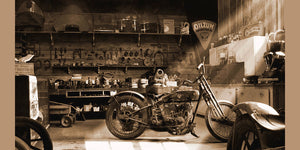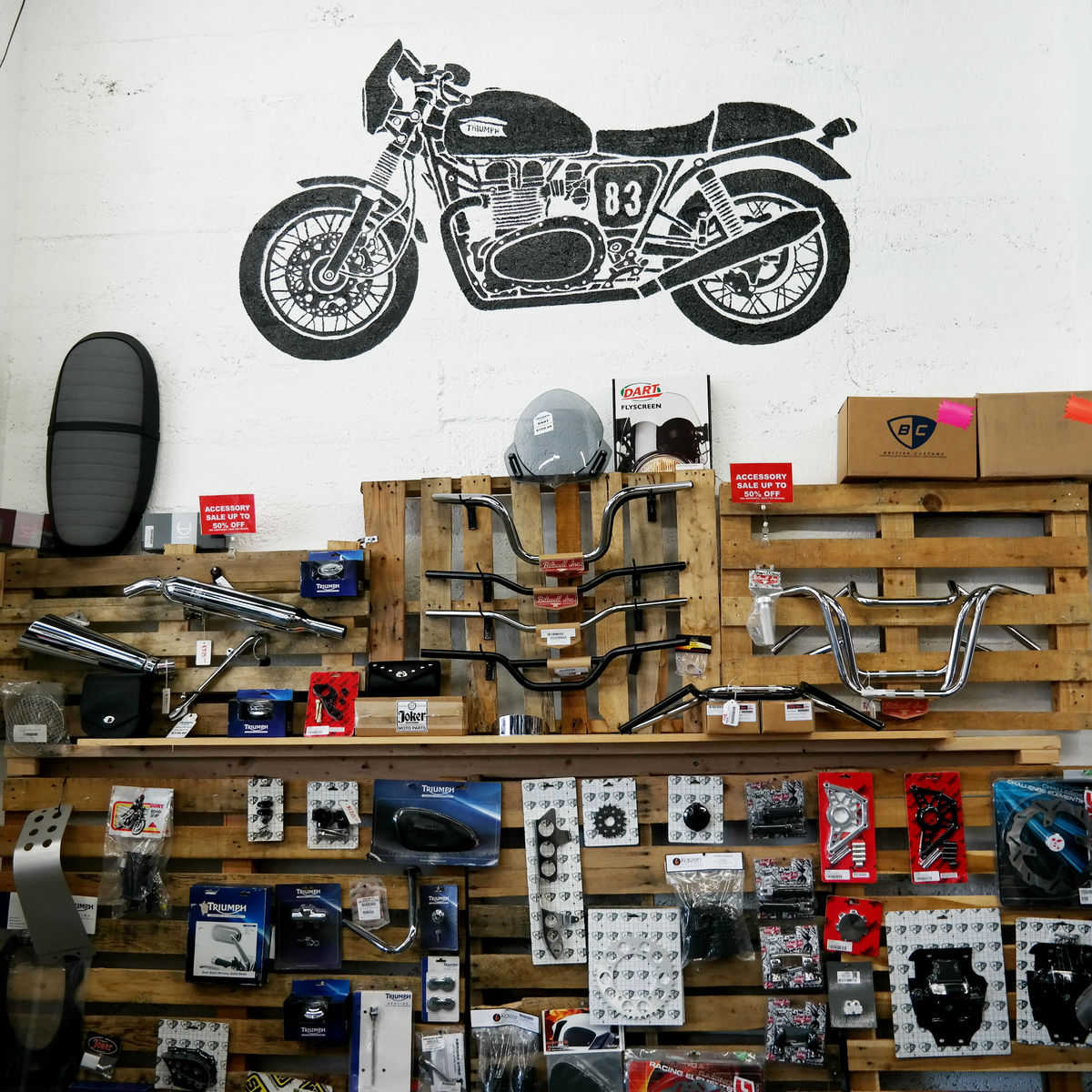Locate Affordable Rates on Motocross Parts NZ for every single Bike
Locate Affordable Rates on Motocross Parts NZ for every single Bike
Blog Article
Understanding the Crucial Parts of a Bike: A Comprehensive Overview for Lovers
For motorbike enthusiasts aiming to raise their riding experience and guarantee their bikes run efficiently, understanding the vital elements of a motorbike is extremely important. Each component, from the engine's detailed operations to the vital role of the stopping mechanisms, not just impacts performance but likewise security and convenience. This overview will go through the fundamental parts that every rider must be acquainted with, allowing informed choices in both maintenance and possible upgrades. As we begin this expedition, one must ask: exactly how does each element engage to develop the smooth experience every enthusiast seeks?
Engine Elements

The camshaft plays a crucial role in managing the timing of the engine's valves, making sure the specific opening and closing required for effective gas and air intake, as well as exhaust expulsion. This timing is crucial to maintaining ideal engine efficiency and efficiency. In addition, the carburetor or fuel injection system, relying on the motorbike model, is in charge of mixing air with fuel in the right ratio for burning.
The cooling system, either air or liquid-based, functions to keep the engine's temperature level within operational limits, avoiding getting too hot and making certain long life - mx gear nz. Each part, thoroughly developed and integrated, adds to the seamless operation of the engine, specifying the motorbike's power output and general efficiency
Transmission System
Integral to the motorbike's capability, the transmission system makes sure efficient power transfer from the engine to the wheels. This system consists of numerous critical elements, including the clutch, gearbox, and last drive, each playing a crucial duty in equating the engine's power right into motion. The clutch, typically operated by a hand bar, offers to disengage the engine and engage from the transmission, enabling for smooth gear changes and regulated acceleration.
The gearbox, commonly referred to as the transmission proper, has a collection of equipments that bikers can manually move with to adjust the bike's rate and torque result. These equipments are set up in a series that enables the motorcycle to accelerate efficiently and keep ideal engine efficiency throughout various rates. The majority of motorcycles use a consecutive gearbox, calling for the rider to move gears in a fixed order.
Braking Mechanisms
While understanding the transmission system is key to utilizing a motorcycle's power, similarly essential is the capacity to control and quit that power efficiently, which is where braking devices come into play. Brakes are vital for safety and performance, providing the motorcyclist with the needed control to navigate numerous surfaces and conditions. Typically, motorbikes include 2 kinds of braking systems: disc brakes and drum brakes.
Disc brakes are much more common in modern motorbikes due to their exceptional efficiency. This system offers far better warm dissipation, regular performance, and boosted stopping power, particularly in damp problems.
On the other hand, drum brakes, though much less common, are still discovered in some motorbikes. They work by pressing brake footwear versus the internal redirected here surface area of a drum connected to the wheel. While normally much less reliable in heat dissipation and stopping power, drum brakes are less complex and more cost-effective.
Understanding these stopping systems' nuances enables motorcyclists to maintain their motorbikes properly and appreciate the design that guarantees effective and safe stopping.
Suspension and Guiding
Suspension and steering systems are crucial parts that dramatically affect a motorcycle's handling and adventure comfort. The shock absorber, including forks at the front and shock absorbers at the back, soaks up roadway irregularities, enhancing stability and control. Front forks, inverted or usually telescopic, compress and rebound to alleviate effects, while rear shock absorbers preserve tire contact with the road, essential for traction and safety and security.
Steering, focused around the handlebars, attaches the cyclist to the motorcycle's directional control. The steering head bearings ensure smooth procedure, enabling exact ability to move. Proper placement and maintenance of these bearings are essential for foreseeable guiding feedback and decreasing rider exhaustion.
The suspension's adjustability is another crucial facet; preload, damping, and rebound setups permit customization to match various riding conditions and designs. This adaptability is essential for optimizing efficiency, whether browsing city streets or dealing with tough trails. Technologies like electronic shock absorber supply real-time modifications, enhancing adventure high quality across varied terrains.

Electric Systems
After making certain a regulated and smooth adventure with effective suspension and guiding systems, focus turns to the electrical systems, a critical element of modern motorbikes. These systems play an essential function not just in starting the engine however likewise in powering numerous components that enhance the capability and security of the bike.
At the heart of a bike's electrical system is the battery, which shops electric energy required tank bag for himalayan for starting the engine and powering supporting systems - motox parts nz. The alternator or generator, paired with the rectifier-regulator, makes sure the battery remains billed while the motorbike functions, converting power right into electric energy and maintaining voltage degrees
The ignition system, an additional vital component, is in charge of igniting the air-fuel mix in the engine's cyndrical tubes. Modern bikes often utilize a digital ignition system, using better performance and integrity compared to conventional systems.
Illumination systems, including headlights, tail lights, and indications, are additionally vital, guaranteeing presence and security for the motorcyclist. Extra digital components such as sensing units, control devices, and presents add to innovative attributes like fuel injection read more management, anti-lock stopping systems (ABDOMINAL MUSCLE), and electronic control panels, additionally improving the riding experience.
Final Thought
An extensive comprehension of a motorbike's vital components, consisting of the engine, transmission system, braking devices, suspension, guiding, and electrical systems, is indispensable for fanatics aiming to enhance safety and security, comfort, and efficiency. Mastery of these aspects allows for notified decisions pertaining to maintenance and upgrades, inevitably improving the riding experience. By incorporating this understanding, riders can ensure their bikes run at peak efficiency and dependability, therefore maximizing both pleasure and durability of their cars.
For motorcycle lovers looking to boost their riding experience and guarantee their bikes run smoothly, comprehending the important elements of a bike is critical.Indispensable to the motorcycle's performance, the transmission system makes sure reliable power transfer from the engine to the wheels.While understanding the transmission system is crucial to using a motorcycle's power, equally crucial is the ability to manage and stop that power successfully, which is where stopping mechanisms come into play. Commonly, motorcycles feature two types of braking systems: disc brakes and drum brakes.
A complete understanding of a motorcycle's vital parts, including the engine, transmission system, stopping systems, suspension, steering, and electric systems, is crucial for enthusiasts intending to maximize safety, performance, and convenience.
Report this page